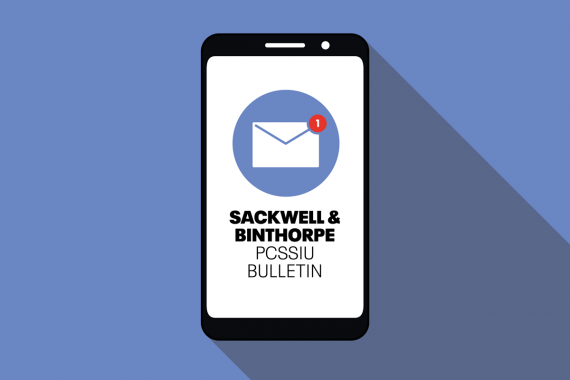Aiming to build on reality: all the latest news from Sackwell & Binthorpe

Hello primary care support fans! It’s Penny here again.
Now that the government has published the bill that will give formal powers to the Sackwell & Binthorpe ICS (and the country’s 41 other ICSs), I thought this would be a good time to explain what transformative changes you’re likely to see going forward as we aim to move towards the future.
Competition time
First, some really exciting news. We’re running a competition to choose a new name and logo for the ICS. What better way to celebrate our focus on meaningful partnership and collaboration than to make the naming of the ICS our first act of co-production?
Your process for coming up with a name is completely up to you, but the following mandatory guidance may help. The winners will be chosen by the Identity Task and Finish Group of the Values and Signage Subcommittee. Please note that practices are expected to remain open for the duration of any in-hours workshop sessions. Details of out-of-hours workshop funding arrangements and discretionary payments for Patient Branding Champions can be found on the ICS website.
- Work in one or more teams, preferably involving all practice team members and other stakeholders, as appropriate. Consider inviting a patient or someone with lived experience of names and naming to participate. Listen to all ideas particularly those from people with hard-to-hear voices. Try to include as many of these ideas as possible in your final “name”.
- What message is your name trying to convey? It should ideally be aligned with or related to the ICS’s vision. You can access a copy of our vision and mission statement from the contracting section of the ICS website – you can find it under rent reimbursements in the premises sub-menu. A downloadable Our Vision poster for display in waiting rooms is available in Word and PDF formats.
- Your name should and preferably must include one or more of the following words: ‘delivering’, ‘together’, ‘better’, ‘healthier’, ‘care’, ‘partnership’, ‘alliance’, ‘your’, ‘our’, ‘all’, ‘community’, ‘working’, ‘integrated’ and ‘forever’.
- Your logo design should ideally reflect your choice of name and should express the ICS’s core values in a visual format. These are inclusion, compassion, diversity, ambition, collaboration, integration, scale and financial balance.
- You are strongly encouraged to use the following symbols in a fresh and original way to convey the aims and values of the ICS: circles, interlocking rings or hands, colourful representations of people (preferably in a circular and/or interlocking arrangement), one or more pieces of a jigsaw puzzle, rainbows.
Your ICS questions answered
Lots of you have asked what the new legislation will mean in practice. Here we address some of your questions.
What are the main changes we are likely to see?
Ever since we formed the STP, the forerunner of the shadow ICS, we have been aiming to build on meaningful collaboration and partnership working at a local level. By putting the ICS on a statutory footing, the forthcoming legislation makes, or aims to make, that aim a reality.
What does good look like?
Of course, success depends entirely on culture and relationships. What culture looks like and how we start an honest conversation to take relationships to the next level are the next challenges we face as a system. We shall publish a relationship maturity matrix so that ICS partners can self-assess their partnership readiness and identify the relationship domains where they still have work to do.
How will governance work?
The reforms brought in by the 2012 act were sometimes criticised as complicated. Thankfully, the new act promises to streamline everything, making it much easier to understand. The integrated care board (ICB) will be the main decision-making body working with the integrated care partnership (ICP) at local authority (LA) or place level, where it will collaborate with the health and wellbeing board (HWB) to ensure that the relevant ICB and ICP strategies, and the joint strategic needs assessment (JSNA) under the auspices of the HWB, are fully aligned. The ICB will be involved in ICP strategy and the HWB will need to be consulted on the ICB strategy. The JSNA, refreshed every three years, should inform the five-year, annually refreshed plans that ICBs are expected to produce, as well as the place-based plans of the ICPs. One or more of these plans should ideally clarify remaining details such as who is responsible for what, how much time will be left for commissioning services, how decisions will be taken, and who, if anyone, is “in charge”.
Penny Stint is primary care enablement lead for the Primary Care Support and Strategic Integration Unit (PCSSIU) at the Sackwell & Binthorpe ICS. As told to Julian Patterson
Related Articles
READERS' COMMENTS [1]
Please note, only GPs are permitted to add comments to articles










😂..If only this was just a satire!